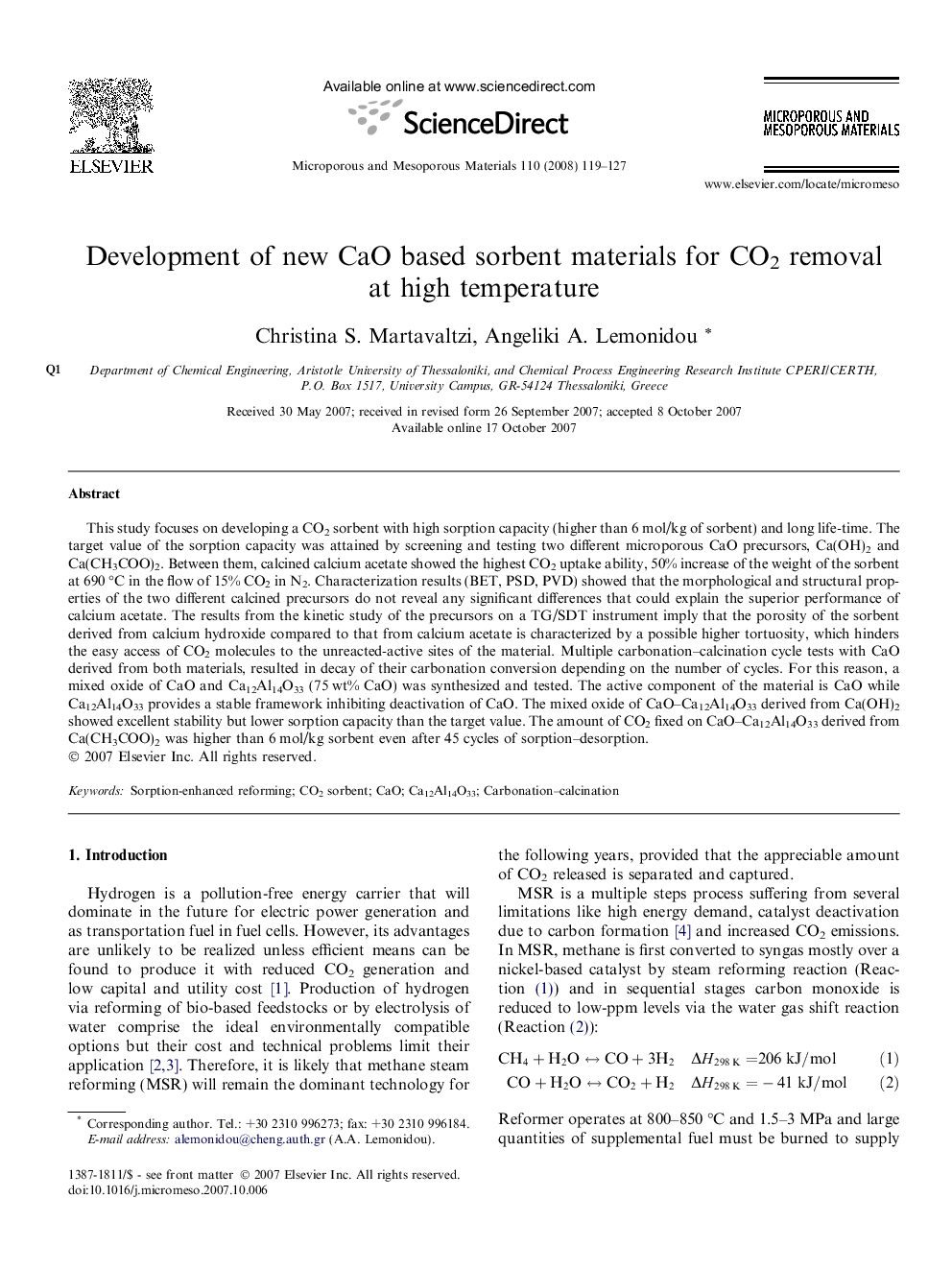| Article ID | Journal | Published Year | Pages | File Type |
|---|---|---|---|---|
| 76317 | Microporous and Mesoporous Materials | 2008 | 9 Pages |
This study focuses on developing a CO2 sorbent with high sorption capacity (higher than 6 mol/kg of sorbent) and long life-time. The target value of the sorption capacity was attained by screening and testing two different microporous CaO precursors, Ca(OH)2 and Ca(CH3COO)2. Between them, calcined calcium acetate showed the highest CO2 uptake ability, 50% increase of the weight of the sorbent at 690 °C in the flow of 15% CO2 in N2. Characterization results (BET, PSD, PVD) showed that the morphological and structural properties of the two different calcined precursors do not reveal any significant differences that could explain the superior performance of calcium acetate. The results from the kinetic study of the precursors on a TG/SDT instrument imply that the porosity of the sorbent derived from calcium hydroxide compared to that from calcium acetate is characterized by a possible higher tortuosity, which hinders the easy access of CO2 molecules to the unreacted-active sites of the material. Multiple carbonation–calcination cycle tests with CaO derived from both materials, resulted in decay of their carbonation conversion depending on the number of cycles. For this reason, a mixed oxide of CaO and Ca12Al14O33 (75 wt% CaO) was synthesized and tested. The active component of the material is CaO while Ca12Al14O33 provides a stable framework inhibiting deactivation of CaO. The mixed oxide of CaO–Ca12Al14O33 derived from Ca(OH)2 showed excellent stability but lower sorption capacity than the target value. The amount of CO2 fixed on CaO–Ca12Al14O33 derived from Ca(CH3COO)2 was higher than 6 mol/kg sorbent even after 45 cycles of sorption–desorption.
